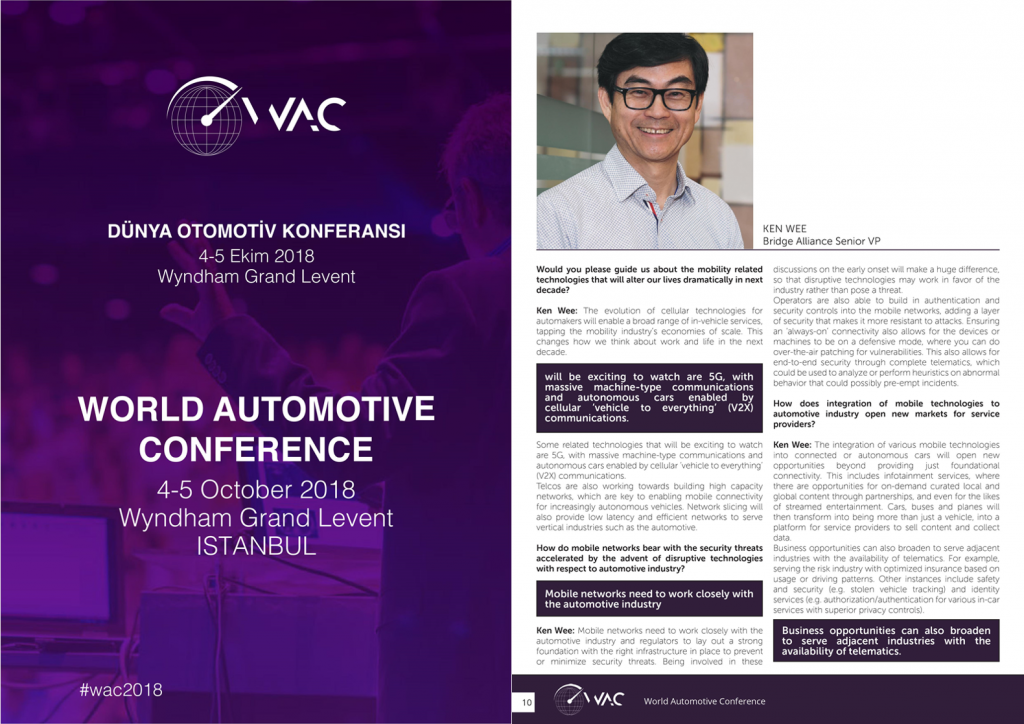The automotive sector is transiting through an enormous change. This urges companies, which are already highly energetic in terms of adapting new age technologies, to keep up with the speed of global innovation.
Özlem Derici Şengül, Research Consultant for the 2018 World Automotive Conference (WAC), speaks with Bridge Alliance’s Ken Wee, Senior Vice President of Alliance Partnership and Innovation, to understand more about how mobility-related technologies will help to transform the automotive industry.
This interview first appeared on the 2018 WAC’s Bulletin Issue IV.

Would you please guide us about the mobility-related technologies that will alter our lives dramatically in next decade?
Ken Wee: The evolution of cellular technologies for automakers will enable a broad range of in-vehicle services, tapping the mobility industry’s economies of scale. This changes how we think about work and life in the next decade. Some related technologies that will be exciting to watch are 5G, with massive machine-type communications and autonomous cars enabled by cellular ‘vehicle to everything’ (V2X) communications.
Telcos are working towards building high capacity networks, which are key to enabling mobile connectivity for increasingly autonomous vehicles. Network slicing will also provide low latency and efficient networks to serve vertical industries such as the automotive.
How do mobile networks bear with the security threats accelerated by the advent of disruptive technologies with respect to automotive industry?
Ken Wee: Mobile networks need to work closely with the automotive industry and regulators to lay out a strong foundation with the right infrastructure in place to prevent or minimize security threats. Being involved in these discussions on the early onset will make a huge difference, so that disruptive technologies may work in favor of the industry rather than pose a threat.
Operators are thus able to build in authentication and security controls into the mobile networks, adding a layer of security that makes it more resistant to attacks. Ensuring an ‘always-on’ connectivity allows for the devices or machines to be on a defensive mode, where you can do over-the-air patching for vulnerabilities. This also enables for end-to-end security through complete telematics, which could be used to analyze or perform heuristics on abnormal behavior that could possibly preempt incidents.
How does integration of mobile technologies to automotive industry open new markets for service providers?
Ken Wee: The integration of various mobile technologies into connected or autonomous cars will open new opportunities beyond providing just foundational connectivity. This includes infotainment services, where there are opportunities for on-demand curated local and global content through partnerships, and even for the likes of streamed entertainment. Cars, buses and planes will then transform into being more than just a vehicle, into a platform for service providers to sell content and collect data.
Business opportunities can also broaden to serve adjacent industries with the availability of telematics. For example, serving the risk industry with optimized insurance based on usage or driving patterns. Other instances include safety and security (e.g. stolen vehicle tracking) and identity services (e.g. authorization/authentication for various in-car services with superior privacy controls).



